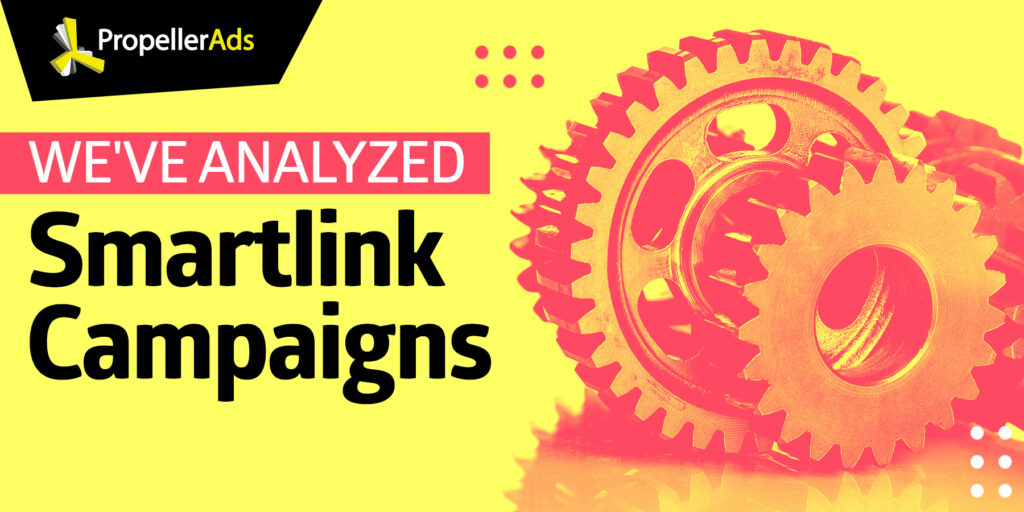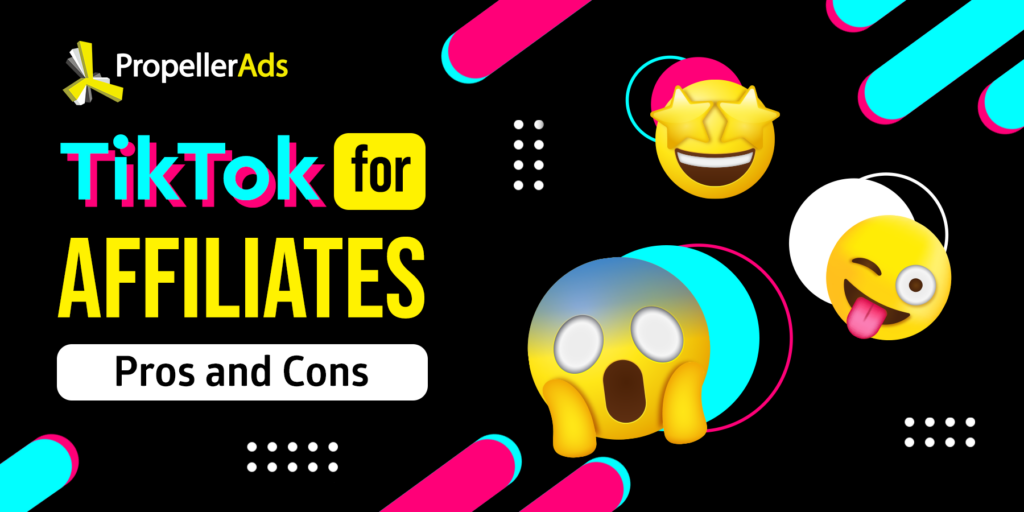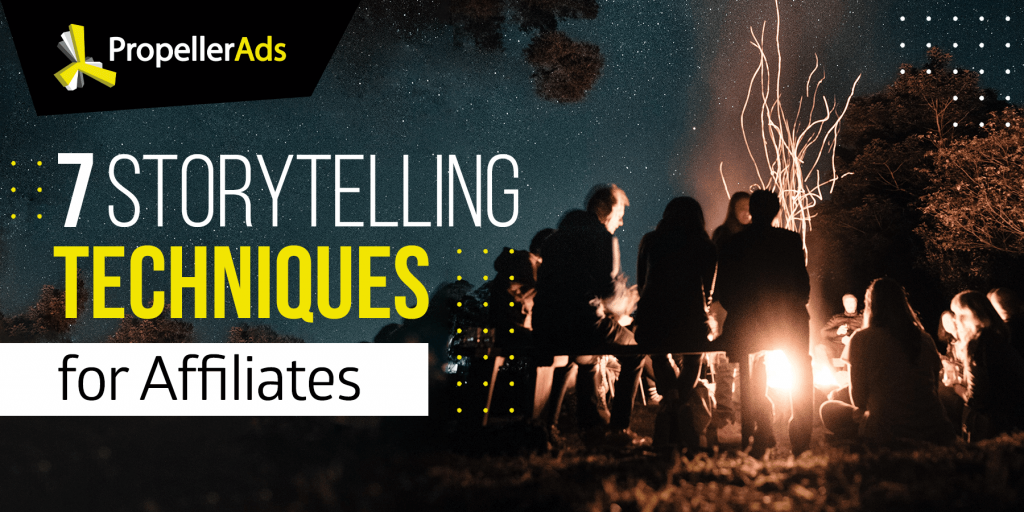Can You Start Affiliate Marketing without a Website?
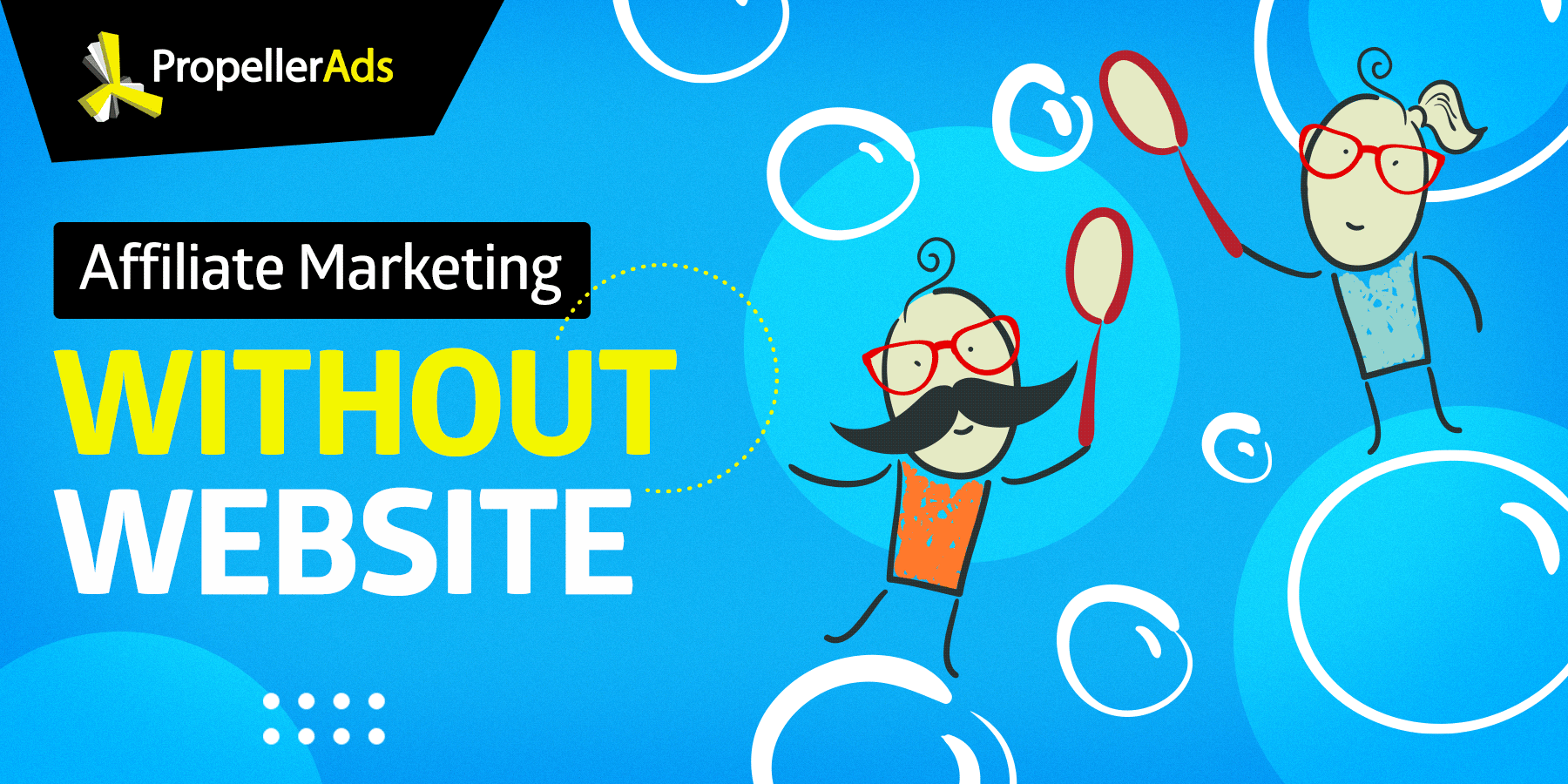
This post is also available in:
PT
ES
Affiliate marketing without a website – is it even possible? What if you are neither a coder, nor a designer? Well, spoiler – nothing can stop you from promoting your offers if you don’t have those mad skills.
Indeed, you need some basic stuff to start your campaign, but a website is not necessary on the list. Let’s see what you really need to become an affiliate marketer and how to free yourself from extra work.
What do you need to start affiliate marketing?
Basically, you don’t need too much to become an affiliate marketer. There are only two must-have things: offer to promote and traffic source.
Yup, that’s the starter kit which is enough to deliver the right ad to a potential customer when he is most likely to convert. Let’s get a bit into details.
The right offer
The easiest and most effective strategy for your affiliate marketing campaign without a website is using two options – Smartlink or a Survey offer. Smartlink doesn’t involve landing pages, while Survey offers already have them. What are they in a nutshell? Here:
- Smartlink: Smartlink is a highly-technical algorithm that stores numerous various offers under a single link. Once a visitor clicks the link, the traffic is divided between offers with the highest EPC (earnings per click). Smartlink allows you to work with any type of traffic and purchase it specifically for this purpose.
- Surveys: Survey offers, like the one you can find at Zeydoo, are great if you already have an idea about a cheap traffic source to use. The mentioned Finance survey handles huge traffic volumes with no problem. Some affiliates combine it with landing pages, the others just roll it as a stand-alone offer.
And, of course, if you need more advice on choosing the offer, you can check our workshop and this guide.
Reliable traffic source
Well, if you are reading this, guess, you already have one! Also, in addition to self-serve platforms like PropellerAds, affiliates use other sources – social media, search engines, blogs, etc. You may rely on Google, Facebook, Reddit, Quora, Blogspot, or Medium as your sources – everything depends on where your target audience is.
Social media
Facebook, Twitter, and Instagram are pretty crowded – people spend hours scrolling their feeds every day. These platforms can boast of high-quality traffic, so you can try getting paid or free advertising plans for your affiliate marketing campaign.
Most social media platforms have restrictions for typical affiliate marketing offers, especially in iGaming, Dating, or Sweepstakes. However, you can try cooperating with influences or posting reviews with affiliate links to get through the limitations.
Online communities
Other sources of social traffic are such platforms as Reddit, YouTube, TikTok, blogs, various educational platforms, etc. These websites are already rich in organic traffic, so all you need is to choose relevant ones, compose the right message, and promote specific offers appealing to the local community.
The best strategy is to make your audience, traffic source, and offer match thematically: this will increase your chances of success.
Okay, so you have an offer and a traffic source. Logically, your next step is the offer promotion and this is exactly when most affiliates ask themselves whether they need a website. So, let’s find out!
All you need is… a landing page
And a landing page is all you need! You don’t have to craft the entire site – a converting landing page is enough. Sometimes, the offer owners provide ready-made landing pages, but if you strive for the highest results and exclusivity – you’d better create one yourself.
Okay, now we need to reveal ourselves a bit. Technically, a landing page is almost a website, but it has one page only. Still, it is hard to call it a full-fledged site, since it is small and building a landing page is much easier – it doesn’t require any special skills.
Luckily, there are numerous landing page builders to benefit from and we have an entire list of recommendations to share. These tools usually include numerous templates, as well as features for analysis, optimization, A/B testing, and more.
What is more, once you craft a landing and then customize it a million times for your new offers instead of creating new ones from scratch.
In a nutshell, a landing page is where your offer is located. Here is an example:
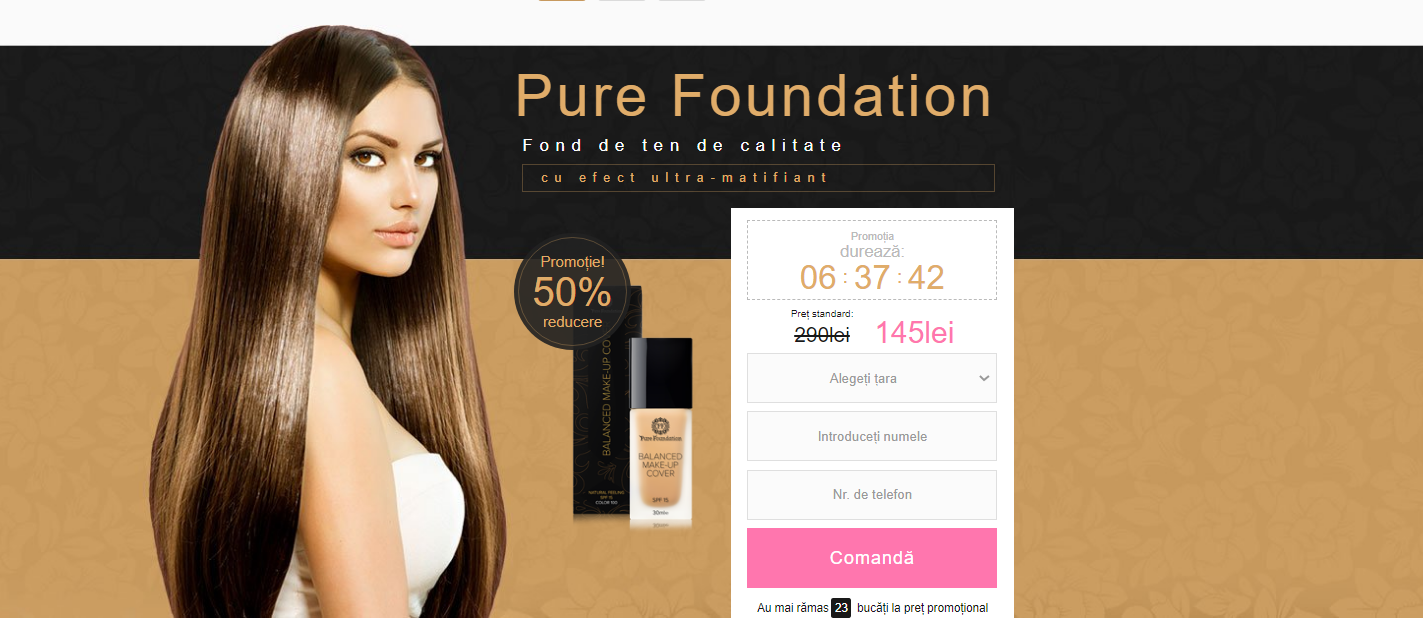
This is exactly where users perform a target action, be it a purchase, download, subscription, registration, etc. But there is another element of your potential mini-website – a pre-lander.
Okay, and what is a pre-lander?
A pre-lander is a page that appears before your offer (landing page). This is kind of a warming-up for your visitors, that is why pre-landers are meant to be catchy and informative.
A pre-lander is a chance to tell users more about your product, share a success story, give some life hacks and instructions, post customers feedback, and whatever else your imagination produces.
Here is an example of a warming-up pre-lander for a Dating offer:
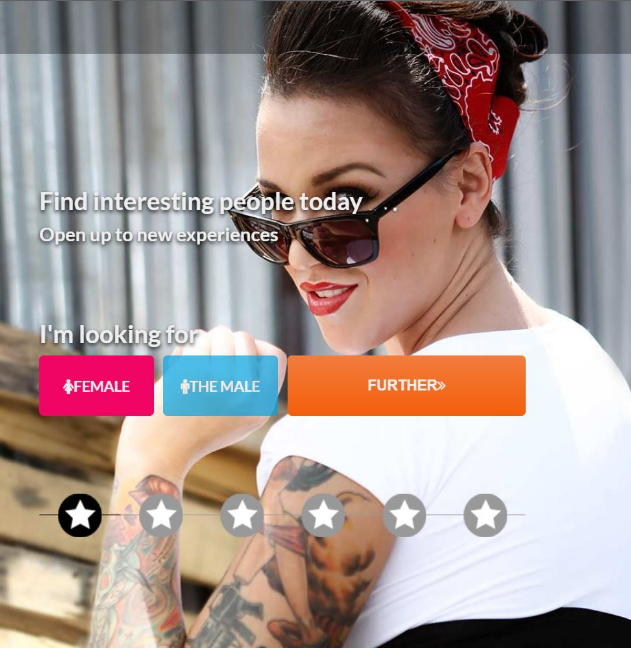
An appealing and informative text combined with high-quality images will definitely evoke not only interest, but trust in your visitors. Indeed, there is a mountain of suspicious stuff around the web, so people are not always inspired by clicking random links and buttons with “Push me” signs – they are not Alice in Wonderland, though.
However, if you add some product/service details to your landing page and make it look friendly, visitors will definitely press and push more eagerly. Here are some ideas for your pre-lander content:
Question
In our previous example, we see a simple question related to the Dating offer: who are you looking for – a male or a female? After answering it, the user knows what to expect further. The same idea can be used for other offers.
Say, if you promote a Gaming offer, you may ask your visitors if they are 18 already. For Sweepstakes, you can ask something like: “Do you feel lucky?”, etc. Make sure you have a clear question with two or three answers for the best engagement.
Product description
Another good idea is to provide a product description and mention some unique features it has. For example, your eCommerce offer is about sneakers made of eco-leather. So tell your visitors that they are nature-friendly and firm at the same time!
Or else, you might promote facial cream. It is a good practice to describe the list of ingredients, skincare recommendations, and possible effects.
Success story
Success stories help your visitors get more enthusiastic about the offer. All in all, we are social creatures, so reading success stories is always inspiring. This format suits Sweepstakes, Finance, iGaming, eCommerce, and other verticals. This can be anything from a story about weight loss to a life-changing micro-credit.
Sense of urgency
Also, whatever offer you have, you can include a countdown to urge your visitors. For instance, this can be the time till the promo offer ends or the number of exclusive products left.
What is more, even though a pre-lander adds an additional step in your conversion flow, you can be assured that all visitors that appear on your landing page know what they are up to. After you describe the service/product on your pre-lander, users will have all the information to accept the offer consciously.
Scarcity, Urgency, Exclusivity: 3 Words Every Affiliate Should Understand
How to create a landing page and pre-lander?
Let’s define the key success points you need to know – they will help your pre-landers and landing pages stand out.
- Consistency
Not only should your copies be attractive, but also – consistent. Make sure that the headlines and descriptions match your offer. Also, a pre-lander must match your landing page entirely. Misleading your potential leads is not the best way to get rich.
- High-quality visuals
Use high-quality images, unless your witty marketing plan doesn’t include wacky selfies to make things look more natural.
- Clear navigation
There is nothing more frustrating than a ready-to-convert user who cannot find the “Buy Now” button. In such a dramatic scenario, 99% of them will just leave. Make the navigation straightforward and buttons – clearly-defined.
- Testing
Defining what works best is a matter of testing (and retesting). Do at least a couple of A/B tests to see which version of pre-lander or landing page performs better. Try changing the colors, images, texts, location of the button, and other elements.
Conclusion
So, this is it! Now you know that you don’t have to create a full-fledged website to promote your offers. A landing page is absolutely enough to make your offers shine and fill your pockets with money. If you want even a more striking strategy, you can also add a pre-lander – a warming-up page that appears before your offer and makes it clearer to your customers.
Remember that pre-landers make your customers’ choice more conscious, so that you get meaningful leads and better conversion rates, of course.
At the same time, there are truly website-free strategies, like social media traffic, online communities, Smartlink, and survey offers.
So wait no longer – rush to the landing page builders and create like an artist or forget about that and turn your steps to non-website solutions! Let your campaigns skyrocket!
Do you have any affiliate marketing experience without a website? We would love to read your story in our Telegram Chat!
